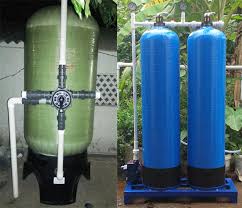Purifying water is crucial to protecting your health and safety One of the most efficient and simple methods of purifying water is a sand filter. This technique has been in use for centuries, evolving from basic sand beds to sophisticated multi-layer systems. This article will provide a thorough overview of the process of Water purification sand filterwork, their types, and the benefits they bring.
How Sand Filters Work
At its core the sand filter operates on the principle of physical filtration. Water is pumped through an sand layer which collects particles and impurities. The sand layer, typically composed of granular materials such as silica, offers a vast surface area and a range of pore sizes which effectively eliminate bacteria, sediments, and other pollutants. The filtration process typically involves various phases:
Pre-Filtration: Larger particles as well as debris are removed before the water enters the sand filter to prevent clogging.
Filtration: The water flows over the sand beds, where smaller particles are trapped within layer of sand.
Post-Filtration: The water that has been filtered is stored to be used for treatment or reuse.
Types of Sand Filters
The slow Sand Filters: These are inexpensive and simple to use, utilizing one layer of fine sand. They use physical and biological processes to eliminate contaminants. Over time, a biological layer, also known as a schmutzdecke is formed on the surface which enhances the filtration process. They are perfect for applications that are small in scale like community or household water systems.
Rapid Sand Filters: These use the coarser sand bed, which operates with a greater flow rate. They require frequent backwashing to remove the impurities that have accumulated. Filters made of rapid sand are often used for municipal water treatment facilities due to their efficiency and capacity.
Multi-Grade Sand Filters: These feature multiple layers of different-sized sands and gravel. This makes it possible to achieve greater efficiency in the removal of a wider selection of particle sizes. Multi-grade filters are used in both smaller and large-scale filters to provide better filtration performance.
Benefits of Sand Filters
Simplicity and Cost-Effectiveness: Sand filters are relatively easy to construct and maintain, making them an affordable option to meet a wide range of water purification needs.
Environmental Impact: They use no chemicals and have an environmental footprint that is minimal in comparison to other methods of filtration.
Durability Sand filters are durable. They last for a long time and are used in various settings, from residential to industrial.
Scalability: They are developed for personal use on a small scale or large-scale municipal systems, providing flexibility based on demands.
In Industrial sand filter (فیلتر شنی صنعتی) can be described as a safe and efficient method of purifying water. Their capability to eliminate various contaminants through simple physical and biological processes makes them an effective instrument to ensure clean as well as safe water for drinking. It doesn’t matter if it’s a small-scale home system or a larger-scale treatment facility, understanding the various types and advantages of sand filters can help in making informed decisions regarding water treatment solutions.



